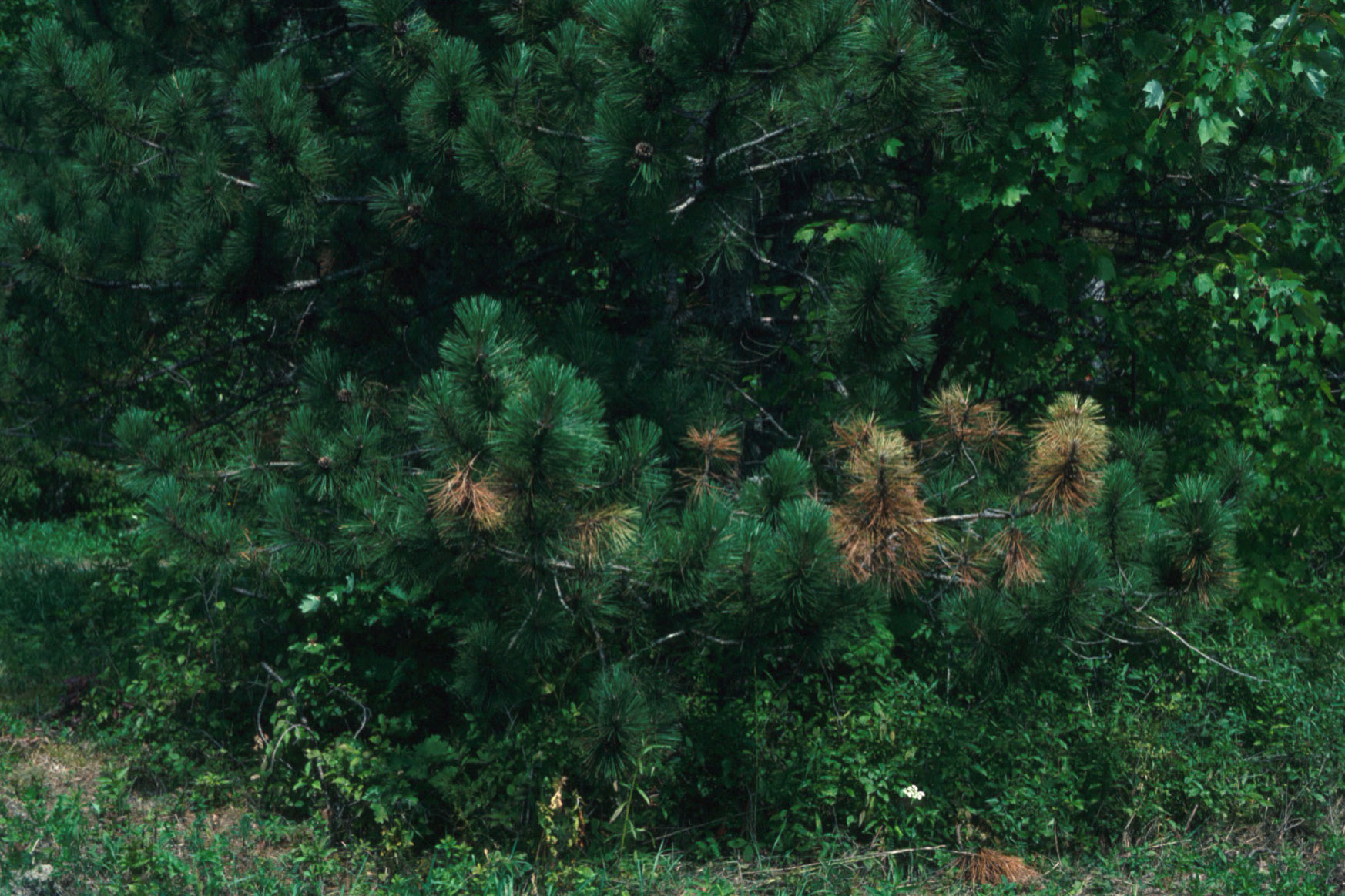Pine Gall Weevil
|
|
Coleoptera: Curculionidae Hosts: Red pine, pitch pine, and Virginia pine Evidence: Look for spindle-shaped galls on branches. They first appear as slight swellings on one side of the stem, but surround the entire stem as they continue to grow. The galls may reach lengths of up to 4 cm. If several galls are formed on a single small branch, it may die. Life Cycle: The life cycle takes three full years to complete, but broods may overlap within a given locality. Adults lay eggs in niches chewed into the bark of one year old twigs in early summer. The larvae bore into the cambium, then separate and tunnel outward from the egg niche. They continue to feed for three consecutive years and pupate in the bark during late spring of the final year. Adults from a given brood are usually present one summer only and do not overwinter. Management: This widely-distributed insect does not typically cause serious injury. Infested limbs may be pruned at the whorl below the gall and destroyed. |
.jpg)
a. PINE GALL WEEVIL larvae initiate the formation of spindle-shaped growths. |

b. Flagging and heavy damage to red pine caused by the PINE GALL WEEVIL. |
References:
Drooz, A.T. 1985. Insects of Eastern Forests. USDA Forest Service Miscellaneous Publication 1426. p 378;
Rose, A.H. and Lindquist, O.H. 1999. Insects of Eastern Pines. Canadian Forest Service Publication 1313. P 84.


